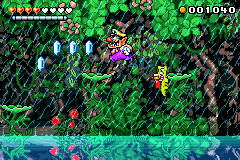
Mario Kart: Super Circuit is a 2001 kart racing game for the Game Boy Advance (GBA). It is the third Mario Kart game and retains its predecessors' gameplay: as a Mario franchise character, the player races opponents around tracks based on locales from the Super Mario platform games. Tracks contain obstacles and power-ups that respectively hamper and aid the player's progress. Super Circuit includes various single-player and multiplayer game modes, including a Grand Prix racing mode and a last man standing battle mode.

Wario is a character in Nintendo's Mario video game series that was designed as an archnemesis to Mario. Wario first appeared as the main antagonist and final boss in the 1992 Game Boy game Super Mario Land 2: 6 Golden Coins. His name is a portmanteau of the name Mario and the Japanese word warui, meaning "bad". He is usually portrayed as a greedy treasure hunter who routinely loses the treasure or artifacts he ultimately finds. Since his debut, he has appeared in the majority of Mario video games. Hiroji Kiyotake designed Wario, and Charles Martinet voiced the character from 1993 to 2023.

Super Mario Land 2: 6 Golden Coins is a 1992 platform game developed and published by Nintendo for the Game Boy. It is the sequel to Super Mario Land. In Super Mario Land 2, the player assumes the role of the protagonist Mario, whose main objective is to reclaim his personal island, Mario Land, from the clutches of his greedy rival Wario. The gameplay builds and expands on that of its precursor with innovations carried over from Super Mario World.
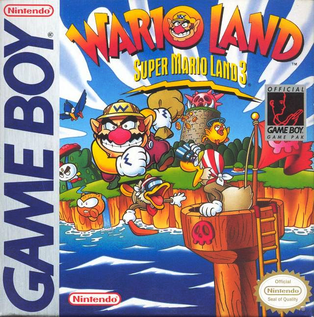
Wario Land: Super Mario Land 3 is a 1994 platform game developed and published by Nintendo for the Game Boy. It is part of the Wario series and a sequel to 1992's Super Mario Land 2: 6 Golden Coins. The story follows Wario travelling to a distant island to steal and sell a valuable statue to purchase his own castle out of envy for Mario's. The player traverses themed zones consisting of levels, each of which scattered with collectible coins which can be used to purchase items that aid the player in progressing through stages.

Sonic Advance, known as SonicN on the N-Gage, is a 2001 platform game developed by Dimps and published by Sega for the Game Boy Advance. It was the first Sonic the Hedgehog game released on a Nintendo console with Sonic Adventure 2: Battle on the GameCube, and was produced in commemoration of the series' tenth anniversary. The story follows Sonic, Tails, Knuckles, and Amy as they journey to stop Doctor Eggman from taking over the world. Controlling a character, players are tasked with completing each level, defeating Eggman and his robot army, and collecting the seven Chaos Emeralds.
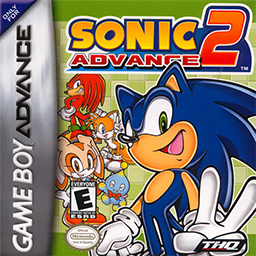
Sonic Advance 2 is a 2002 platform game developed by Dimps and published by Sega for the Game Boy Advance. It is an installment in the Sonic the Hedgehog series and the sequel to 2001's Sonic Advance. The story follows Sonic as he sets out to save his friends and retrieve the seven magical Chaos Emeralds from Dr. Eggman. Gameplay consists of the player completing various levels as one of five characters, each with their own unique attributes. After each zone is completed, the player faces Dr. Eggman in a boss battle.
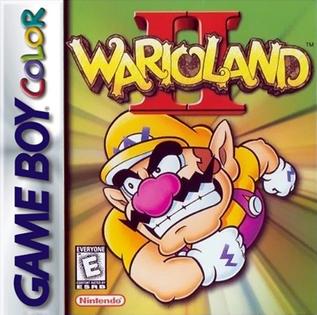
Wario Land II is a 1998 platform video game developed and published by Nintendo for the original Game Boy. It was later re-released and optimised for the Game Boy Color. In the game, Wario has to recover his treasure from Captain Syrup. The Game Boy Color version was released for the Nintendo 3DS Virtual Console in 2012.
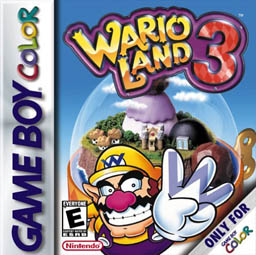
Wario Land 3 is a platform game developed and published by Nintendo for the Game Boy Color. In the game, Mario's archrival Wario must free a mysterious figure who is trapped inside a music box. It was followed by Wario Land 4 in 2001. It was also released for the Nintendo 3DS Virtual Console in 2013, and as part of the Nintendo Switch Online service on 8 February 2023.

Wario World is a platform video game developed by Treasure and published by Nintendo for the GameCube. Part of the Wario series, it was released in Europe, North America and Australia in 2003 and Japan in 2004. The game's plot centers on Wario and his quest to regain his treasure and his castle from the evil gem, Black Jewel.
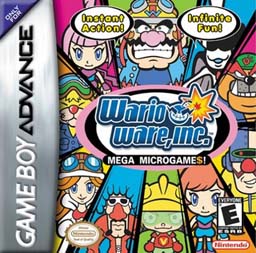
WarioWare, Inc.: Mega Microgames!,, known as WarioWare, Inc.: Minigame Mania in the PAL region, is a minigame compilation video game developed and published by Nintendo for the Game Boy Advance. The debut title in the WarioWare series, the game is about rapid completion of "microgames", short minigames given to the player consecutively and with increasing speed per each game complete. The game's concept was inspired by the "Sound Bomber" mode of Mario Artist: Polygon Studio for the Nintendo 64DD. The music and sound effects were recycled from Wario Land 4. The game was produced by Takehiro Izushi and directed by Hirofumi Matsuoka. Matsuoka was also the director of Polygon Studio. Mega Microgames! was released in 2003; in Japan in March, in North America and Europe in May and in Australia in June.
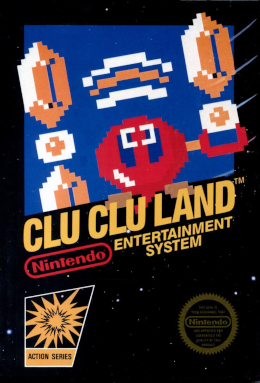
Clu Clu Land is a puzzle video game developed and published by Nintendo in 1984 in Japan for the Famicom. It was released in North America in 1985 as a Nintendo Entertainment System launch game and in Europe in 1987. Nintendo has rereleased it many times via emulation.

Tekken Advance is a fighting game released for the Game Boy Advance. It uses sprites based on Tekken 3's 3D models for its characters but the overall menus, fonts and art-style are all modeled after Tekken Tag Tournament. It was the first Tekken game to be released on a Nintendo platform.

WarioWare: Twisted! is a video game for the Game Boy Advance, developed by Nintendo SPD with Intelligent Systems and published by Nintendo. It was released on October 14, 2004 in Japan; May 19, 2005 in Australia; and May 23, 2005 in North America. The second game in the WarioWare series and the seventh in the Wario series overall, Twisted! was the last Wario game to be released on a Game Boy family system.

Torneko: The Last Hope is a 1999 role-playing video game for the PlayStation. The game was co-developed by Chunsoft and Matrix Software and published by Enix. In Japan, the game was ported to the Game Boy Advance in 2001.

Sonic Advance 3 is a 2004 platform game developed by Sonic Team and Dimps and published by Sega for the Game Boy Advance. It is part of the Sonic the Hedgehog series, and the sequel to Sonic Advance 2. The game stars the characters Sonic, Tails, Knuckles, Amy, and Cream as they seek to keep Doctor Eggman and his robot assistant Gemerl from building empires on each of seven chunks Eggman has divided the Earth into.

Virtual Boy Wario Land is a 1995 platform video game developed and published by Nintendo for the Virtual Boy. It stars Wario, who finds himself deep underground after stumbling upon a treasure-filled cave and must find his way back to the surface. Throughout the journey, the player explores and searches for items and power-ups while fighting enemies and defeating bosses. Wario has the ability to jump between the background and foreground at certain points, making use of Virtual Boy's stereoscopic 3D effect.

Wario: Master of Disguise is a platform game developed by Suzak and published by Nintendo for the Nintendo DS. The game was released on January 18, 2007 in Japan, and on March 5 in North America. Its Japanese title, Phantom Thief Wario the Seven, refers to the fact that he has seven "forms". The game was released on the Wii U's Virtual Console in PAL regions and Japan in 2015 and North America in 2016.

Wario is a video game series, a spin-off of the Mario franchise. It comprises various video games created by Nintendo, starring the character Wario. The series began with Wario Land: Super Mario Land 3, the first game to feature Wario as a playable character. The Wario series includes mostly platforming video games and minigame compilations, but also includes other genres.
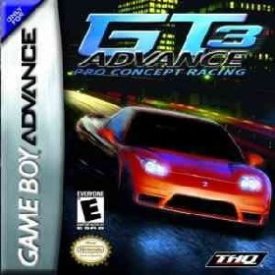
GT Advance 3: Pro Concept Racing, known in Japan as Advance GT 2, is a racing game developed by MTO and published by THQ for the Game Boy Advance. It is the sequel to GT Advance 2: Rally Racing, based heavily on the gameplay from GT Advance Championship Racing, and the third game in the GT Advance series.

